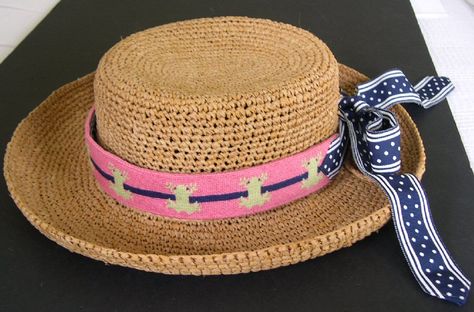
Needlepoint is a form of embroidery that has been cherished for centuries. It involves stitching designs onto a stiff, open-weave canvas, creating beautiful and intricate patterns that can be used for a variety of decorative and functional items. From home decor to personal accessories, needlepoint offers endless possibilities for creative expression. Whether you are a beginner or an experienced stitcher, this craft provides a satisfying way to unwind and produce something beautiful.
Table of Contents
Exploring Unique Needlepoint Projects
One of the exciting aspects of needlepoint is its versatility. You can create everything from traditional wall hangings and cushions to more modern and unique items like a Needlepoint hat. A needlepoint hat combines the timeless elegance of needlepoint with contemporary fashion, making it a standout accessory that showcases your crafting skills. This project not only allows you to explore different designs and techniques but also results in a functional piece that you can wear or gift.
Getting Started with Needlepoint
Starting a needlepoint project involves a few essential steps. Here’s a guide to help you get started:
Choosing Your Canvas: The foundation of any needlepoint project is the canvas. There are various types of canvases, such as mono canvas, interlock canvas, and penelope canvas. Each type has its own unique properties, so choose one that best suits your project. Mono canvas is a popular choice for its versatility and ease of use.
Selecting Threads: The type of thread you use can significantly affect the appearance and texture of your finished piece. Wool, cotton, silk, and metallic threads are commonly used in needlepoint. Wool threads are durable and offer a rich texture, while silk threads provide a smooth and shiny finish. Choose threads that complement your design and canvas.
Choosing a Design: Your design can be as simple or as complex as you like. Beginners might want to start with a pre-printed canvas or a simple geometric pattern. As you gain confidence and skill, you can experiment with more intricate designs or even create your own patterns.
Gathering Supplies: In addition to the canvas and threads, you’ll need a few other supplies, including a tapestry needle, a frame or stretcher bars to hold your canvas taut, and scissors. Having all your supplies ready before you start will make the process smoother and more enjoyable.
Basic Needlepoint Stitches
There are several basic stitches that form the foundation of needlepoint. Here are a few to get you started:
Tent Stitch: This is the most common needlepoint stitch and is often used as a background stitch. It involves making small, diagonal stitches across the canvas, creating a solid, even surface.
Continental Stitch: Similar to the tent stitch, the continental stitch is worked diagonally, but it covers more canvas, making it ideal for larger areas.
Basketweave Stitch: This stitch creates a textured, woven effect and is great for filling in large areas. It’s worked in a diagonal pattern, alternating between rows to create a basket-like appearance.
Cross Stitch: The cross stitch involves making two diagonal stitches that cross each other, forming an “X” shape. It’s a versatile stitch that can be used for both simple and complex designs.

Advanced Techniques and Projects
Once you’ve mastered the basics, you can explore more advanced techniques and projects. Some advanced needlepoint techniques include:
Layering Stitches: Combining different stitches in layers can add depth and dimension to your designs. Experiment with layering stitches to create unique textures and effects.
Beading and Embellishments: Adding beads, sequins, or other embellishments can enhance your needlepoint projects. These elements can be stitched onto the canvas or glued in place for extra sparkle and detail.
Custom Designs: Designing your own patterns allows for complete creative freedom. Use graph paper or design software to create custom needlepoint patterns tailored to your preferences and project needs.
Benefits of Needlepoint
Engaging in needlepoint offers several benefits beyond the joy of creating beautiful items:
Stress Relief: The repetitive nature of needlepoint stitching can be incredibly calming and meditative, helping to reduce stress and anxiety.
Improved Focus: Working on detailed patterns requires concentration and focus, which can improve your overall cognitive skills and attention to detail.
Sense of Accomplishment: Completing a needlepoint project provides a strong sense of accomplishment and pride, especially when you see your hard work come to life in a beautiful finished piece.
Conclusion
Needlepoint is a versatile and rewarding craft that offers endless opportunities for creativity and self-expression. Whether you’re stitching a traditional piece of home decor or a unique accessory like a “Needlepoint hat,” the process is both relaxing and fulfilling. By mastering basic stitches and exploring advanced techniques, you can create stunning needlepoint projects that showcase your skills and artistic vision. So gather your supplies, choose your canvas, and start stitching your way to beautiful needlepoint creations.






